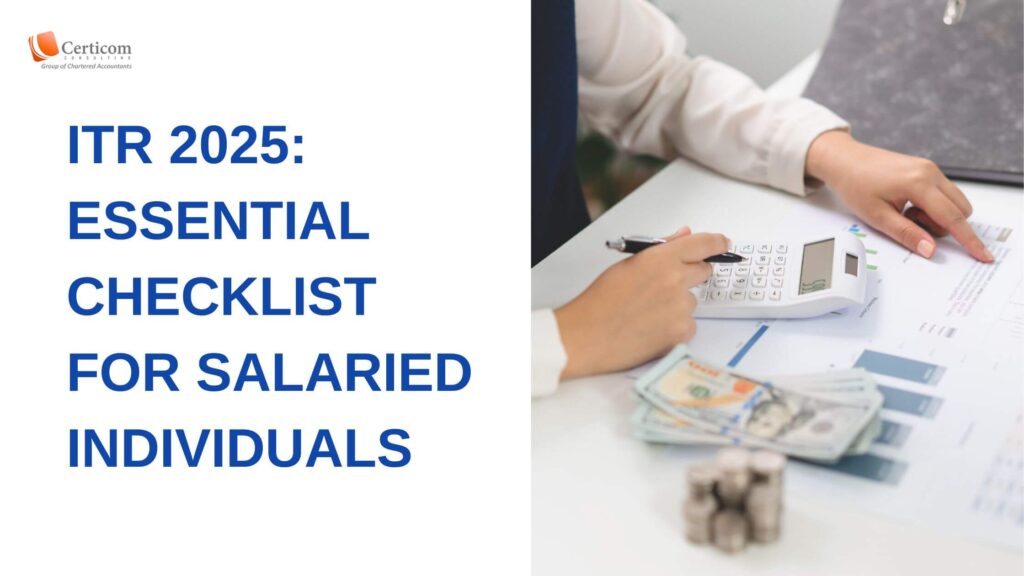ITR 2025: Essential Checklist for Salaried Individuals

As the Income Tax Department has released the Excel utilities for ITR-1 and ITR-4 for Assessment Year (AY) 2025–26, it’s time for salaried individuals to gear up for the tax filing season. ITR-1 is the most commonly used form by salaried taxpayers, but before you start filling out the form, there are a few important things you need to keep in mind.
Who Can Use ITR-1 (Sahaj)?
ITR-1 is applicable for resident individuals whose total income does not exceed ₹50 lakh in a financial year. This form can be used if your income consists of:
Salary or pension
One house property (not involving loss carry-forward)
Family pension
Income from other sources (interest from savings, fixed deposits, income tax refunds, etc.)
Agricultural income up to ₹5,000
However, ITR-1 is not for everyone, even among salaried individuals.

When You Cannot Use ITR-1
You cannot use ITR-1 if:
You are an NRI or Resident but Not Ordinarily Resident (RNOR)
Your income exceeds ₹50 lakh
You have capital gains (short-term or long-term)
Your agricultural income exceeds ₹5,000
You have income from lotteries, horse races, or gambling
You are a director in a company or have unlisted equity shares
You earn income from business or profession
In any of these cases, you must file using another applicable ITR form such as ITR-2 or ITR-3.
Specify Your Employment Type Accurately
While filing your return, you’ll be required to declare the nature of your employment. You must correctly indicate whether you are:
A Central Government employee
A State Government employee
An employee in a Public Sector Undertaking (PSU)
A private sector employee
A pensioner
This classification is important for data accuracy and can affect certain exemptions or reporting obligations.
Keep These Documents Handy (But Don’t Attach Them)
Although ITR forms are annexure-less (you don’t have to submit supporting documents), you should keep the following ready:
Form 16 from your employer
Annual Information Statement (AIS) and Form 26AS from the income tax portal
Interest certificates from banks or post offices
Investment proofs (LIC premium, PPF, ELSS, etc.)
Rent receipts (if claiming HRA)
Bank statements or passbooks
These documents are critical for cross-verification and must be preserved in case the tax department asks for clarification or conducts an audit.

Double-Check Details and Choose the Right Tax Regime
Before filing, you should:
Decide between the old and new tax regimes based on your deductions and total tax liability
Cross-check TDS/TCS/tax paid using Form 26AS and AIS
Reconcile any discrepancies with the employer, bank, or other deductors
Verify pre-filled data like PAN, bank account, contact number, and address
Ensure all income sources are reported accurately
A small oversight can lead to mismatches, notices, or even penalty proceedings—so attention to detail is crucial.
For salaried individuals, filing ITR may seem straightforward, but overlooking key details can lead to unnecessary hassle. Take the time to review eligibility, gather documents, check for accuracy, and choose the correct ITR form. If in doubt, consider consulting a tax professional.
The ITR filing deadline for FY 2024–25 (AY 2025–26) is July 31, 2025, unless extended. Don’t wait until the last minute!
Related Post
Foreign Tax Credit in India: A Guide for NRIs
Top 10 Tax Filing Rules for FY 2024-25
Book A One To One Consultation Now For FREE
How can we help? *




